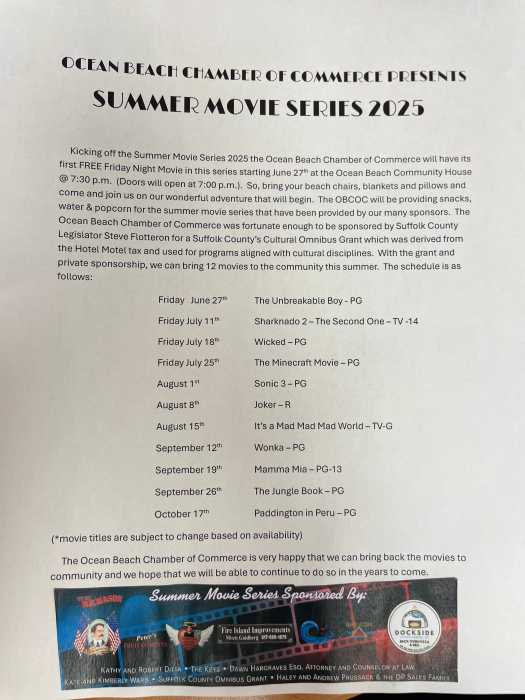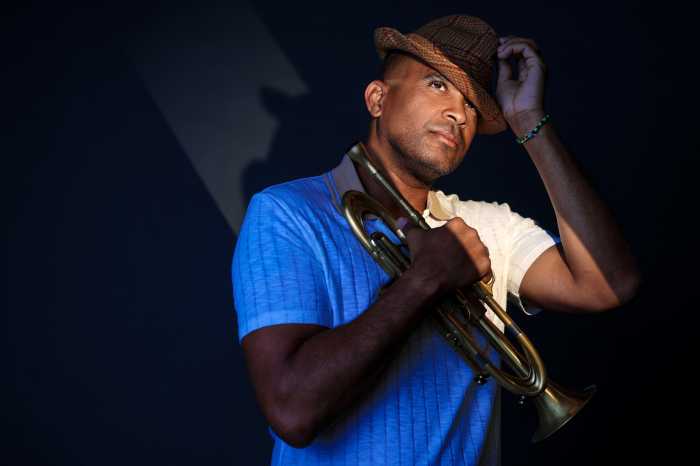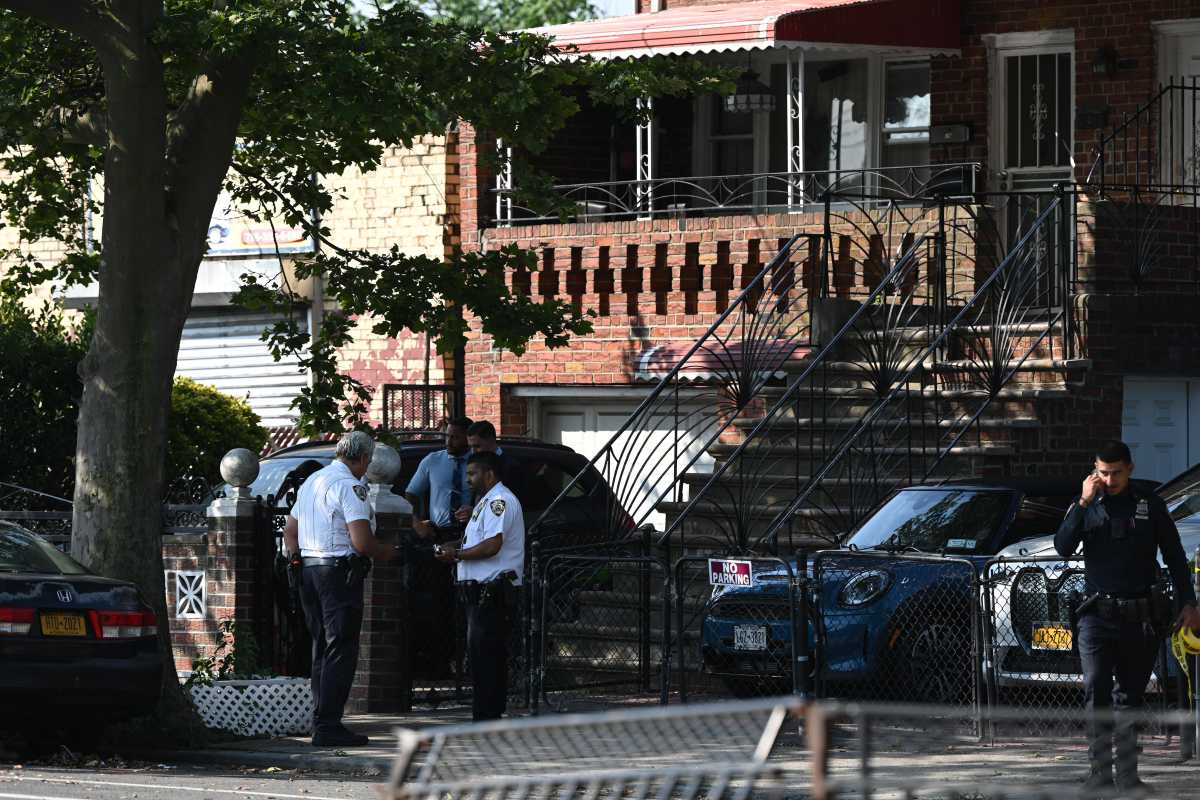Although the classic car chase in "The
French Connection" remains the most indelible Brooklyn moment
on film, the astonishing ride through Greenpoint by Gary Oldman
and Lena Olin in the stylish and bloody "Romeo Is Bleeding"
runs a close second.
In the 1994 gangster saga, Jack Grimaldi (Oldman), a corrupt
Queens cop, is having an especially sordid affair with ruthless
Russian gangster Mona Demarkov (Olin). After a brutal meeting
on a Brooklyn pier, Grimaldi handcuffs Mona and tosses her into
the back seat of his car. He thinks she’s out cold, but when
he starts driving, her legs suddenly appear and take hold of
his head.
The resulting "chase" down Kent Street ends spectacularly
when they crash into a utility pole, the cop barely able to see
with Mona’s lethal gams draped around him. With Grimaldi unconscious,
Mona kicks out the front windshield and escapes, bloody but unbowed.
Such improbably memorable moments pepper Peter Medak’s cold-hearted
and dark-humored movie – out on DVD from MGM Home Entertainment
– helping make "Romeo Is Bleeding" one of the most
entertaining gangster pictures in years.
Also memorable are the vivid performances from an unusually energetic
cast. Oldman and Olin are superb, as always, as are Annabella
Sciorra as Grimaldi’s perfect wife and Roy Scheider as a suave
Mafia Don. Only Juliette Lewis, mired in a dopey subplot as Grimaldi’s
trashy mistress, is not up to their level.
But Medak uses his Brooklyn locations to such authentic effect
– including a nightmarish burial alive right at the north foot
of the Brooklyn Bridge (on the opposite side of the River Cafe,
to be sure!) – that "Romeo Is Bleeding" ends as a bitter,
bleak but immensely entertaining trip through the underworld.
Miller time
Authenticity can also be achieved in the movies artificially,
as a trio of other recent video releases, at least partly set
in Brooklyn, show.
Brooklyn’s streets seem slightly off-kilter in the World War
II-era "Focus," based on a 1947 Arthur Miller novel
and starring William H. Macy as Lawrence Newman, a mild-mannered,
ordinary man whose new spectacles make his bigoted neighbors
think he and his wife Gertrude (Laura Dern) are Jews.
If Brooklyn looks strange in "Focus," it’s not merely
because we’re back in the 1940s, which director Neal Slavin presents
as Norman Rockwell territory on the surface, while unsubtly hinting
that, like in David Lynch’s "Blue Velvet," nastiness
festers below.
No, a larger culprit looms: Canada.
"Focus" (Paramount Home Video) was largely shot in
Toronto (a very clean city, by the way); but don’t blame Toronto
for the antiseptic look of "Focus." Like many directors
before him, Slavin obviously chose Toronto as a cheap substitute
for New York City, but he could have shot his movie in a studio
for all the good it does.
Important themes like bigotry, identity and responsibility are
touched upon but never truly explored. (Later in his career,
Miller would more successfully take on such heady material.)
Macy is good in what’s a skimpily fleshed-out role; Dern does
nothing with a nothing part. In the pivotal role of the head
bigot, Meat Loaf Aday (yes, that Meat Loaf) shows signs of life.
But "Focus" is too bleary-eyed to make an impression.
In Steven Spielberg’s "A.I." (Dreamworks Home Entertainment),
the statue of the Blue Fairy that the robot hero David (Haley
Joel Osment) finds beneath the waters covering what used to be
New York City is located in what remains of Coney Island.
Although frustrating to watch because no attempt is made to connect
the movie’s disparate sections – the beginning domestic drama,
the "Mad Max"-style mayhem, the "Waterworld"-like
visuals, then the climactic, unfathomable creatures appearing
to David 2,000 years in the future, all with no rhyme or reason
– "A.I." is filled with wondrous effects, including
the vivid re-creation of a waterlogged Coney Island.
As the DVD’s extra features show in myriad detail, Spielberg’s
technicians have fashioned a plausible underwater New York City.
Watching behind-the-scenes footage of the FX wizards creating
miniatures of several Coney Island attractions is far more entertaining
than sloshing through the entire 150-minute behemoth that is
"A.I."
Miracle bridge
Similarly, the silly time-travel romance "Kate & Leopold"
(Buena Vista Home Entertainment) uses state-of-the-art visual
effects to help recreate the majesty of a Brooklyn icon – only
instead of years in the future, it returns to 1883, when the
Brooklyn Bridge was first being constructed.
The bridge figures prominently in this sappy romantic comedy,
a Meg Ryan vehicle carjacked by Hugh Jackman as the 19th-century
gentleman who steals her jaded 21st-century heart. The portal
where characters move between the two centuries is on the bridge
itself. (Don’t ask!)
When we first meet Leopold, he’s at the foot of the bridge during
its construction. It’s a superbly realistic-looking special-effects
shot. There’s a wonderful scene later on, after his arrival in
2001 New York City, when Leopold sees the finished bridge in
all its breathtaking splendor for the first time. "It’s
a miracle!" he exclaims to a garbage collector nearby, who
harrumphs in response, "It’s a bridge."
The DVD of "Kate & Leopold" includes an "on
the set" featurette, where one of the technicians talks
about the large set they built at the foot of the bridge, coincidentally,
near where that gruesome burial occurs in "Romeo Is Bleeding."
Several of the matte shots that seamlessly blend the partially
completed bridge with the surrounding neighborhoods are shown.
On his audio commentary, director James Mangold doesn’t hold
back his awe of the structure. "We exploited it as much
as somebody could," he admits, then, sounding remarkably
like Leopold, says, "The bridge is really a glorious and
beautiful structure, an icon of New York."
At least our Brooklyn icons emerge unscathed from "Kate
& Leopold" and "A.I."
























